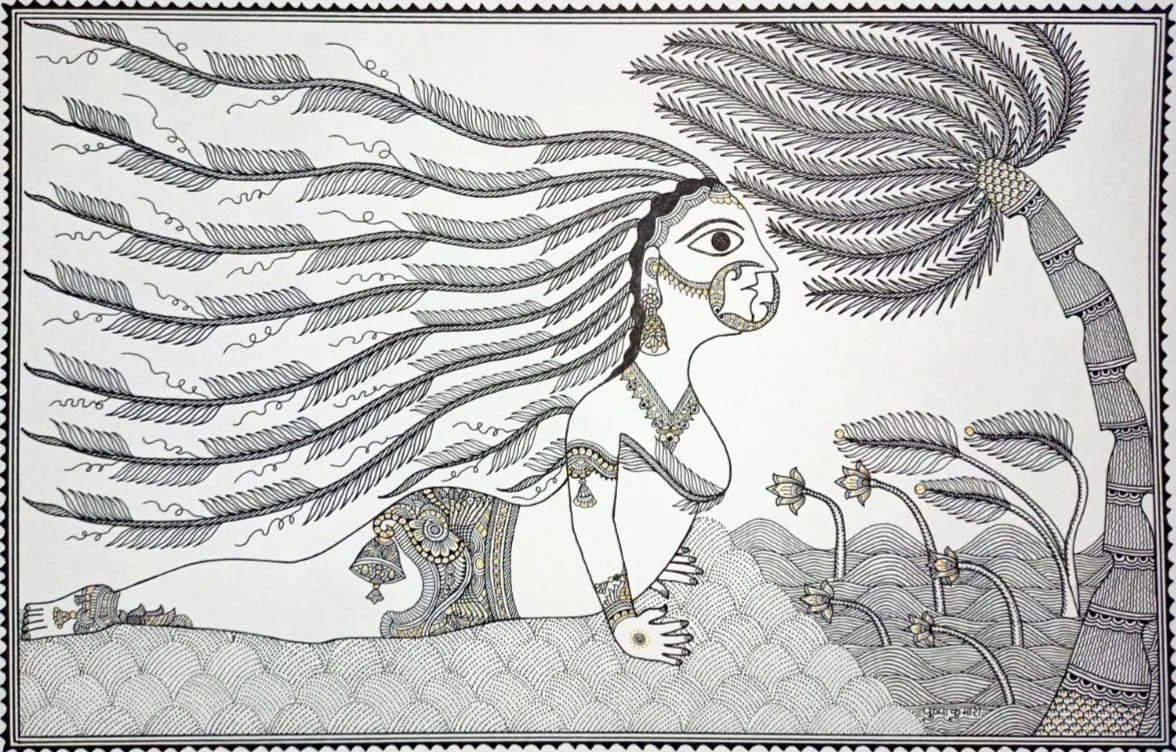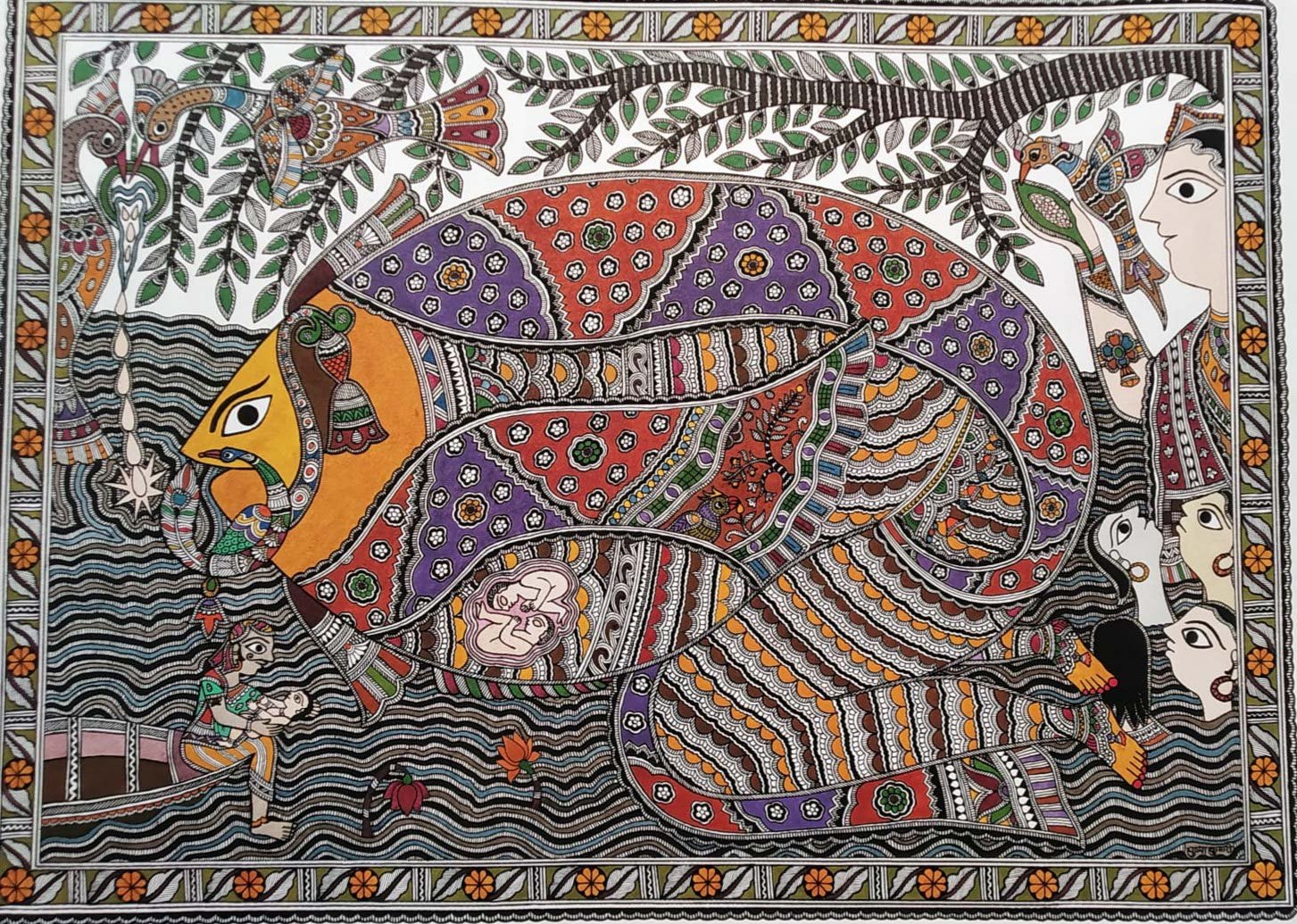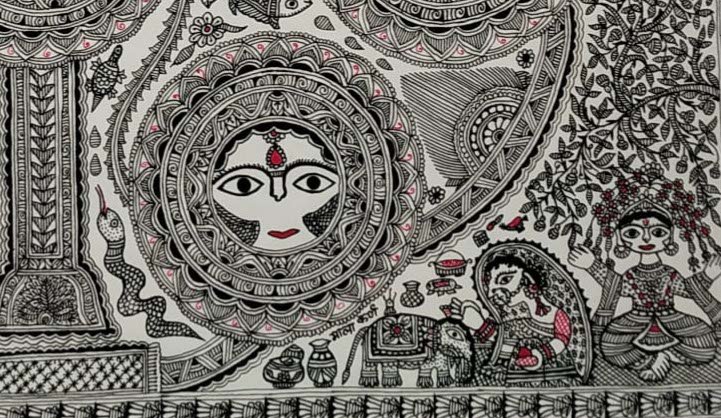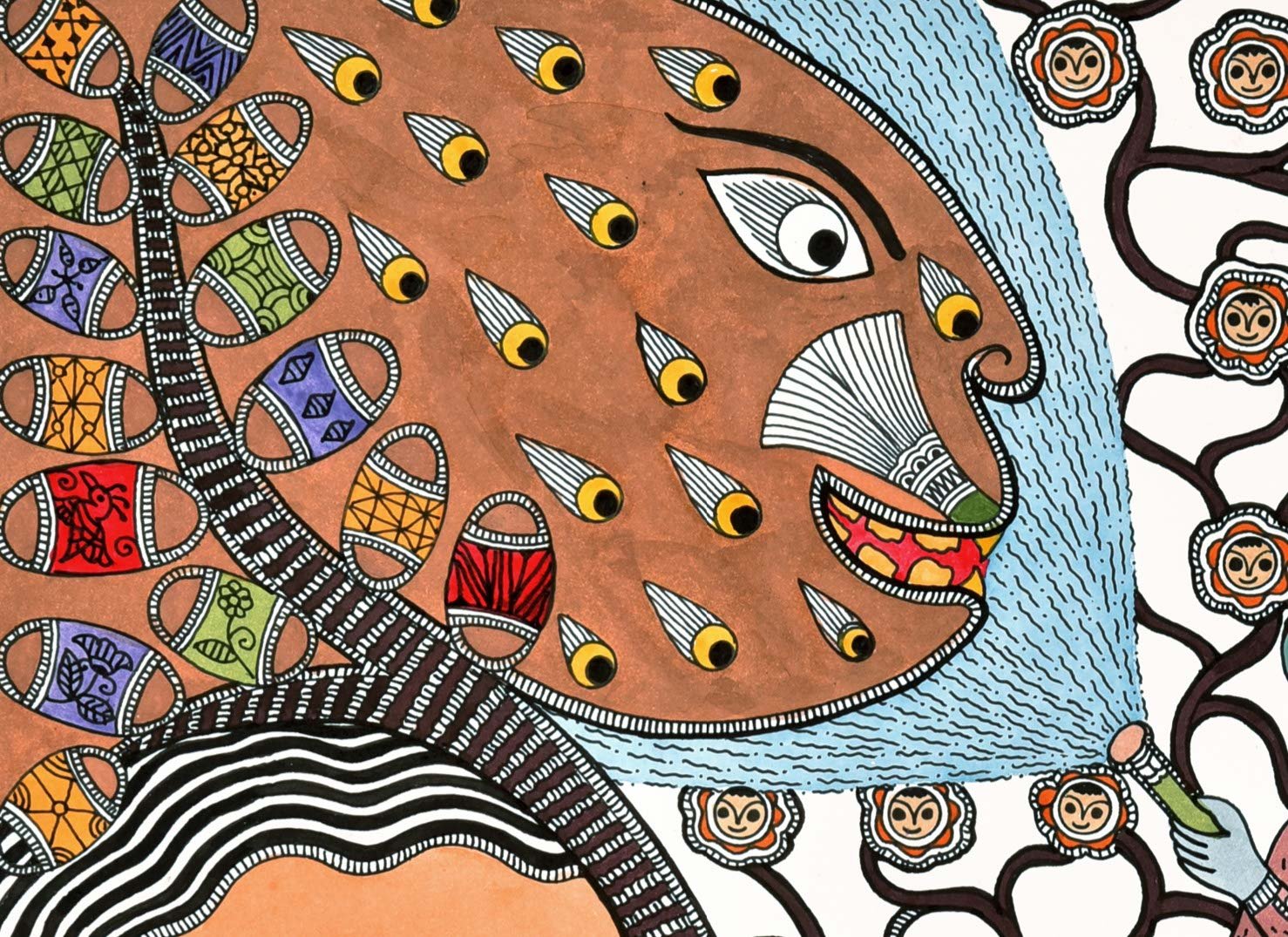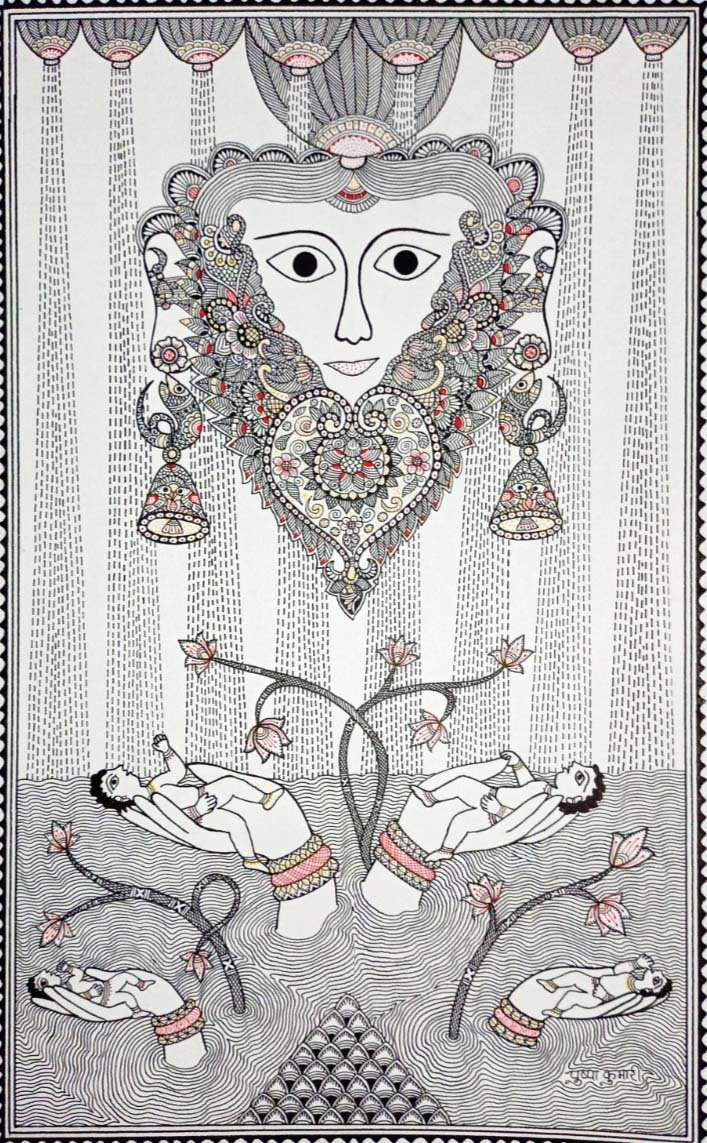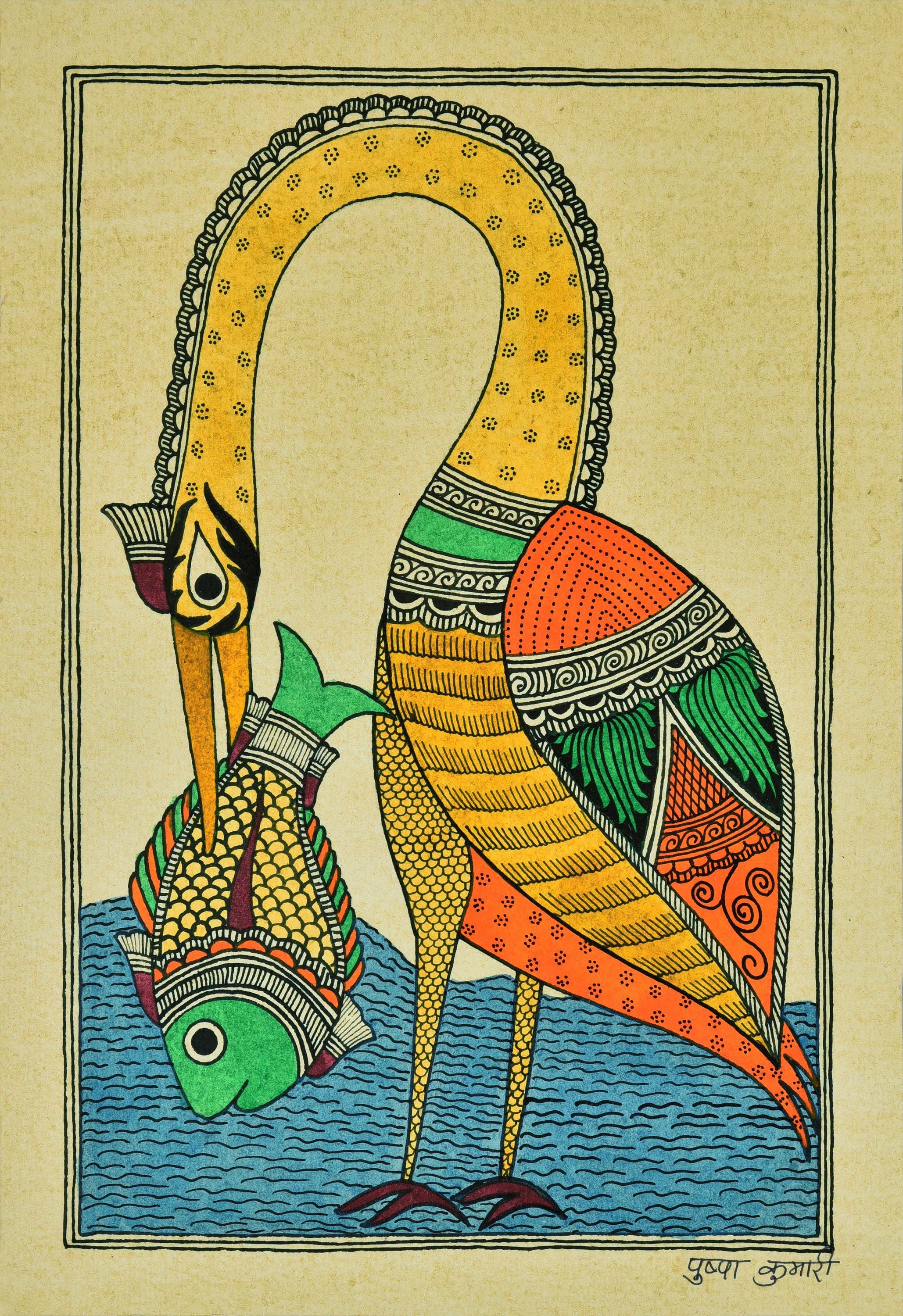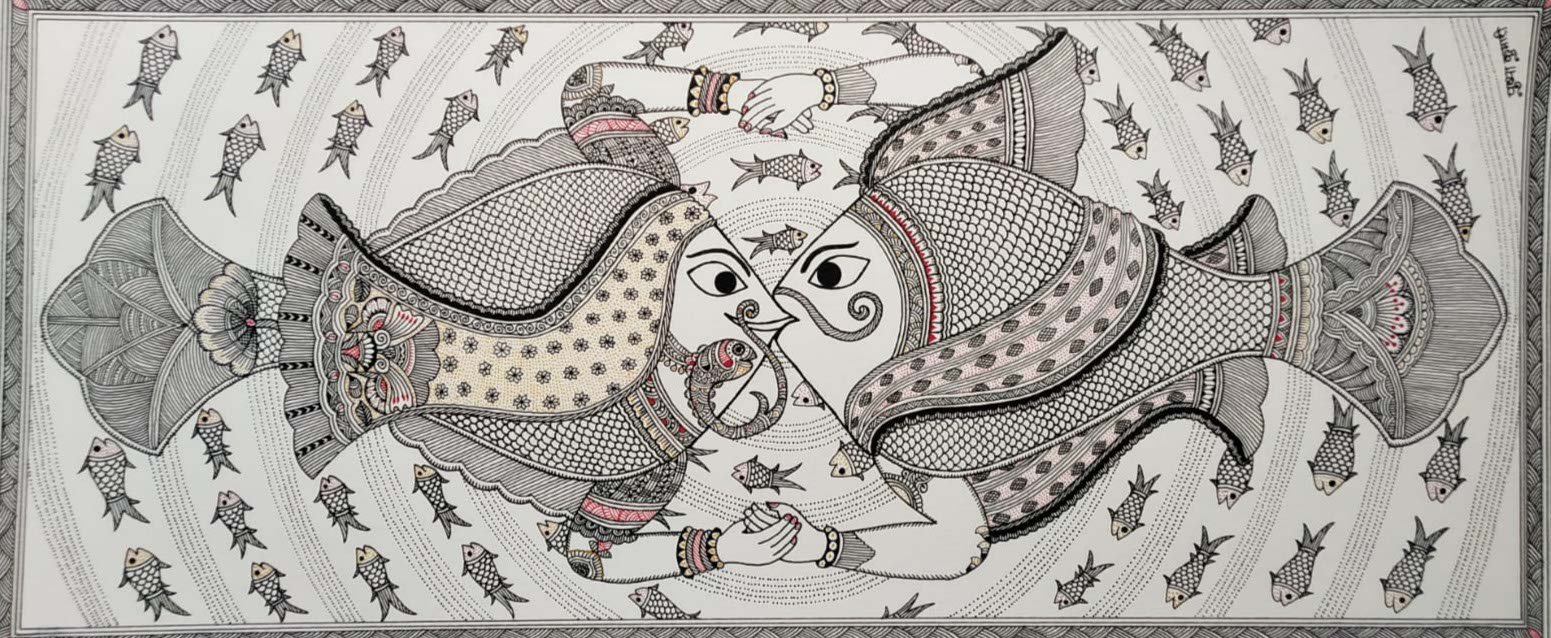Pushpa Kumari
Drawing Intricate Lines Between Past and Present
According to Indian legend, Madhubani painting originated during the wedding of the divine couple at the heart of the Ramayana, Lord Rama, and Sita, daughter of King Janaka of Mithila. In celebration, the king asked his people to create heaven on earth, and they did so by painting murals on their homes. The word Madhubani translates to “forest of honey,” which conjures the artform’s otherworldly origin. Over time, painting on paper and cloth became popular. This derivation from the original tradition is sometimes called Mithila painting after its place of origin, and for centuries, these paintings have ornamented festivals and weddings in the region.
Pushpa Kumari works in two Madhubani painting styles: kachni and bharni. The kachni style features intricately detailed, fine-line black and white drawings created with a piece of string dipped in ink. Pushpa prefers the kachni style as a vehicle for social commentary, because of its high contrast and visual impact. For the more colorful bharni style, she uses natural pigments and acrylic paints to create vibrant swathes of color, then draws details in black atop the flat shapes. Her work is of two worlds: the past and the present. Her paintings depict contemporary conditions and concerns while adhering to traditional principles of the art form—the creation of beauty and the evocation of rasa (an emotion of aesthetic pleasure).
Feminism and the challenges of living in a patriarchal society feature in Pushpa’s paintings. She explains, “In my artwork, I pay homage to the hundreds of women, including my grandmother, who before me have created so much beauty through their paintings. […] Madhubani paintings are like the encyclopedias of our cultural heritage—they are the containers of our beliefs and practices, our history as a people, and our journey as a community.”



